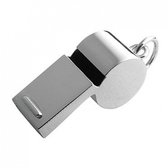
2. Checklists
The role of the referee is:
- to ensure that 30(+) players can play with safety, equity within the laws
- to create time and space to maximise opportunities, whatever their abilities
- to enjoy a fair, safe and equitable contest
Checklists:
The referee’s checklists – in helping to achieve the above, remember to set out your stall right from the outset and to be consistent throughout.
The basics:
- Players are on their feet
- They are on-side
- Advantage must always give opportunities to the non-offending side
Communication:
- Voice, signals and whistle – in varying tones and volume i.e. make your whistle talk too!
- To be preventative – how to penalise without having to blow the whistle
- To allow the game to flow – within acceptable parameters – ATP – Ask, Tell, Penalise – the ask is often in the pre-match briefing
- To be approachable but not gullible – Captains only - not open forum
- To maximise downtime to help get your message across, reiterating the points made in the pre-match briefing
- To be firm and calm
Scrummage:
- Get them level
- Crouch – Touch - Pause – Engage. It’s your call, not theirs
- Keep them a suitable/comfortable distance prior to the above
- Square and stable – they must be comfortable too
- Full arm bind and attached 'til the end
- Backs 5m away 'til ball is out
Lineout:
- Has it formed?
- Two straight lines with a clear space
- The thrower – behind the line. The throw without delay – the jumpers wait til it’s in.
- A fair contest – priority anything untoward across the line!
- The threes back 10 til it ends
Tackle:
- Get there/Be first there to see … then move to get the wider view
- The tackler to release the tackled man and roll away
- The tackled man to be free to place the ball as far back as possible and roll away
- All other players to arrive and stay on their feet
- To arrive through the gate
Ruck and Maul:Know the difference and call it
- Check on those joining and then those outside
- Call “Ruck”
- Call “Maul”
- Having got there and seen it – move to get the wider view
Advantage:
- The best law in the book:
- Where is it on the field of play? Close to the non-offending goal line, midfield, close to the tryline?
- What’s the offence/issue – knock-on, therefore scrum or penalty kick?
- Tell them - Scrum advantage; penalty advantage; advantage over
- Talk to them – signal to them – the key players need to know
- Tactical or territorial – wait and see. The class referee always has time!
- Don’t call them back – bring them back
There is a difference between empathy and sympathy. The former is the trait of a good referee; the latter shows weakness.
Fitness is both physical and mental – without the first the second becomes a struggle.
Make your own checklists – use these. Go through them when training, when warming up, when pre-match briefing, at the next situation – tackle, maul, ruck, scrummage, lineout, kick, injury, etc.
I hope the above will help focus your mind on the key issues. Physical fitness and speed of thought and reaction go hand in hand!

